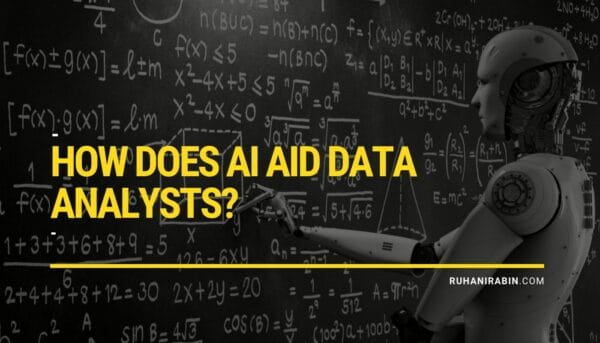Artificial intelligence (AI) in the world of business intelligence (BI) and data analytics is advancing in leaps and bounds. Advanced AI algorithms are capable of performing quick, deep dives into data to automatically uncover insights that may be relevant to business performance — trends, causal relationships between factors, outliers, etc. And these BI tools are also capable of communicating these insights to employees in a natural language they’ll understand regardless of how much data experience they have under their belts.
So, while this is generally an exciting development for enterprises looking to capitalize on all that data they’ve been hoarding, there’s some completely understandable apprehension about whether this tech will start to render the roles of data analysts obsolete.
The answer? No! Not at all. Artificial intelligence in data analytics today can actually aid data analysts by optimizing their workflows. Here’s more on how human-machine relationships will be even more important — and fruitful — moving forward.
AI Uncovers Insights; Analysts Guide & Interpret Them
It’s true that self-service data analytics have empowered employees to directly query data — a more streamlined alternative to years past in which non-technical employees would have to submit requests to a specialized data team who’d then crunch the numbers and send back the results.
But this doesn’t mean organizations no longer need data analysts on staff. Quite the opposite. Freeing these experts from the time-consuming task of having to run query after query on behalf of other teams means they can focus on strategic, higher-level initiatives.
Here are a few examples of how data analysts can work with AI technology to optimize outcomes.
Harvard Business Review offers up a helpful cooking-based metaphor to contextualize the shifting synergy between data analysts and AI tools: Machine-learning algorithms can make great recipes, sure — but they’re essentially “standing in front of a huge warehouse of potential ingredients.” To hit on a winning recipe, they’ll have to just try combination after combination until something works. But what data analysts can do is “serve as the sprinter armed with a flashlight running through the warehouse.” Analysts have the ability to see and summarize what data might contain in order to aid machine-learning algorithms on the journey to insights.
Machine learning and artificial intelligence algorithms can now handle much of the rote task of indiscriminately wading into a warehouse of data, hoping to bump up against something significant. Rather, data analysts can spend time interpreting findings discovered by AI and machine-learning algorithms, adding genuine value to the equation. Absolved of the responsibility of acting as insight factories of sorts, data experts can devote their time to understanding exactly what these automatically generated insights are telling them, and make recommendations accordingly.
Machines can tell us what’s happening according to data. Humans can take this information and figure out why — then focus on what the organization should do as a result of capture value.
Evolving Role of Data Analysts in Marketing
It helps to look at how the evolving roles of data analysts look in the context of a team. Let’s say an organization deploys a new search- and AI-driven BI tool like ThoughtSpot with the aim of giving the “average” end-user, like a marketing manager, the ability to query data directly. Since the marketing team now has access to ad hoc marketing analytics, data analysts no longer need to spend so much time and effort in creating reports.
As Mar Tech Series points out, “real people are needed to develop marketing strategies and objectives that make use of this data.” Data analysts are more integral than ever before in evaluating and interpreting these insights and using them to drive overall business strategy — in this case, marketing. The same principle applies for any team or department, from financial services to manufacturing; healthcare to retail.
AI aids data analysts by outsourcing many rote data-related tasks, freeing these specialists up to explore and interpret the insights returned by analytics platforms.




